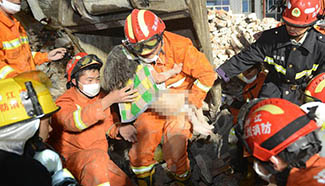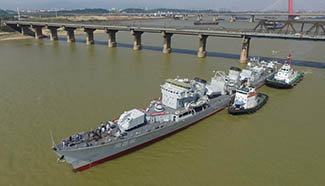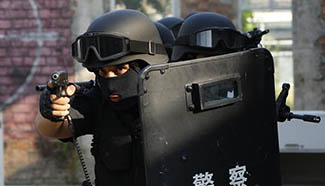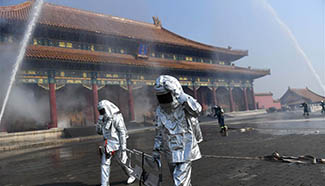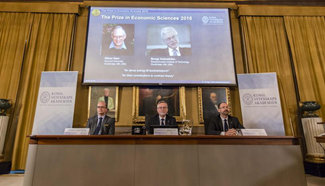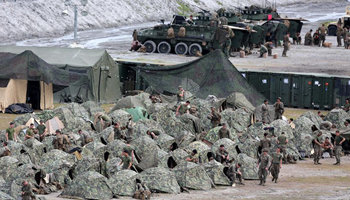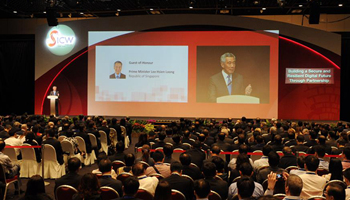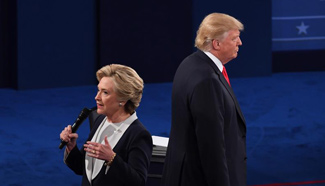BEIJING, Oct. 10 (Xinhua) -- For Adrian Buzato, a physics researcher from Romania, paintings and photos recapturing the epic Red Army's Long March in China 80 years ago highlight a spirit that belongs to the whole of humanity.
Buzato is among 103 foreign experts and business representatives working in Beijing, and 163 diplomatic envoys from 91 countries that were invited to visit an exhibition at the Military Museum of the Chinese People's Revolution to commemorate the 80th anniversary of the end of the Red Army's Long March in Beijing on Monday.
"These paintings and photos showing the snowy mountains that soldiers climbed, the clothes they wore and the weapons they fired are very useful for me to better understand the march," Buzato said.
From October 1934 to October 1936, the Red Army, the forerunner of the People's Liberation Army, trudged across harsh environments such as raging rivers, snowy mountains and marshes to break the Kuomintang regime's grip on the country and to continue their fight against Japanese invaders. Some of the marches were as far as 12,500 kilometers long.
To Buzatu, a researcher at Tsinghua University, hardship and endurance is the very Long March spirit that brings people together to face obstacles head on.
"This spirit is not only Chinese, it belongs to humanity -- we can call it a human trait to continue to persevere and hope for the better to create our future," he said.
Such a unifying spirit is also admired by Ahcene Boukhelfa, ambassador for the People's Democratic Republic of Algeria. "The Long March rallied power of all classes and became the basis for the current People's Republic of China as well as the great political, economic, diplomatic and military progress we can all see today," Boukhelfa said. "It inspired people in the rest of the world to fight for their countries."
Maxime Hermand from France, teaches French at Tsinghua University, knew nothing about the Long March but is now impressed by the "hard conditions" and "courageous soldiers."
Beside a great number of paintings and photos vividly depicting the hard conditions of the Long March, there are also over 200 artifacts, including weapons, manuscripts and cooking utensils on display.
"The belongings of the soldiers impressed me most -- I'm really touched by these old things," says Akhil Parkshar from India, who works for Chinese media in Beijing.
He was also touched by the lifelike simulated scenes. Standing at a simulated scene of the "Zunyi meeting," a key meeting during the Long March that took place in Zunyi City, China's southwestern Guizhou Province, Parkshar finds it little different from the real relics he visited last year.
"It made the history tangible," he said.
General Abdoulaye Fall, ambassador of Senegal, describes the exhibition as "moving."
"It reminds me of the hardships in my 40 years of military career," Fall said.
With various displays and materials, the exhibition has attracted a huge amount of visitors since it opened on September 22. During the Golden Week holiday from October 1 to 7, nearly 60,000 people visited, both from China and abroad. The exhibition will run until October 31.
For Buzato, even though the visit finished in an hour, his interest will never end: "I will definitely go back to read more on Wikipedia or in library."




